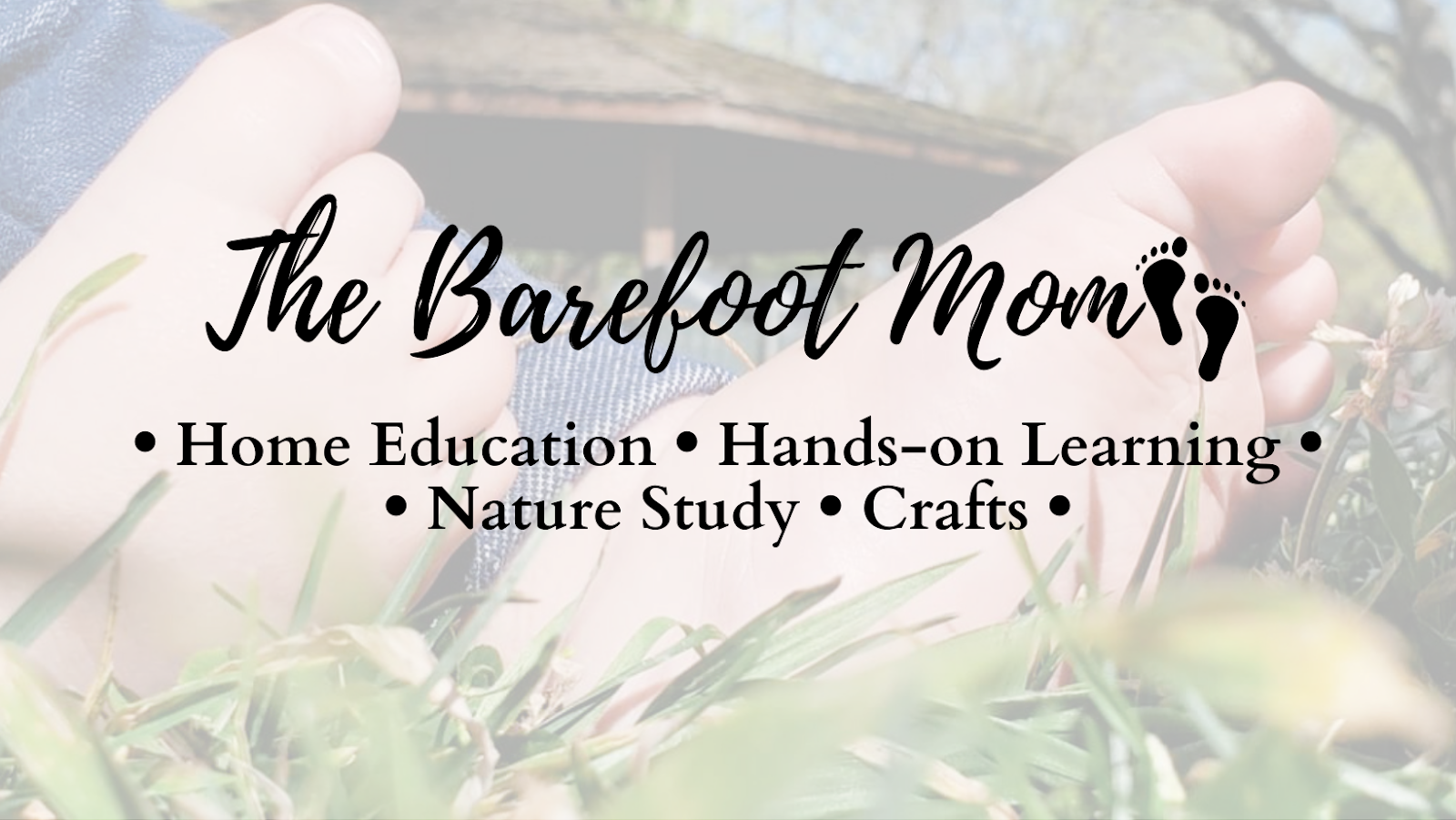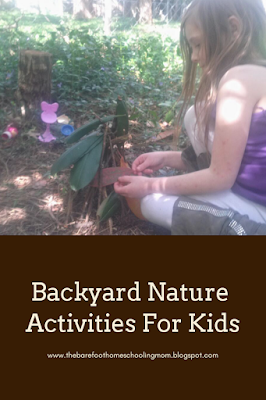Playing outside and interacting with nature is incredibly important, especially for children. It gets kids moving, promotes creativity, and helps teach responsibility for the natural world. In this post I share 5 simple nature activities you can do right in your own backyard.
Now just place your watering hole in your yard, preferably in a place that gets some sun.
If you enjoyed this post, check out:
Make A Simple Compost Bin: a fun way to teach kids about soil
A Homeschool Feather Study
Nature Art:
Take your child around your yard or neighborhood to hunt for any cool pieces of nature that catch your eye. Rocks, acorns, pinecones, grass, leaves, etc...
Then pick a place to work and create cool art with the pieces you collected. Your art work can be anything you want: a cool scene, an animal, just a cool design.
Here are some examples:
Outdoor Tic-Tac-Toe:
Have your kiddos collect 5 small white pebbles and 5 small dark pebbles.
Take a stick and draw a tic-tac-toe board in the dirt or sand.
Take turns playing tic-tac-toe using the pebbles instead of x's and o's.
Take a stick and draw a tic-tac-toe board in the dirt or sand.
Take turns playing tic-tac-toe using the pebbles instead of x's and o's.
Nature Scavenger Hunt:
Make a list of natural items you can find around your backyard or neighborhood and have your kids hunt for them.
Items I commonly include are:
-a white rock
-something pretty
-a leaf
-a pinecone
-an acorn
-something green
-something brown
-something smooth
-something yellow
-a seed
-a clover
-an earthworm
Make A Watering Hole For Pollinators:
Pollinators like bees and butterflies need shallow safe places to come for a drink of water. Find an old bowl or pan you don't mind giving up to the backyard and have your kiddos collect some pebbles and clean them.
Fill the bowl or pan with clean pebbles and add water. Fill it so that the tops of the upper layer of pebbles stick out of the water. This will provide safe places for your pollinators to land and drink.
Now just place your watering hole in your yard, preferably in a place that gets some sun.
Make A Fairy Teepee:
Gather 4 or 5 fairly straight sticks and cut them to be the same lenghth.
Take 2 of them and press one end of each into the ground, then cross them at the top end and tie them together with some yarn. Add the remaining sticks, creating a teepee frame, and tie again.
Cover the outside with leaves by poking a hole in them and sliding down over the tops of the teepee sticks.
What are some of your family's favorite nature activities?
If you enjoyed this post, check out:
Make A Simple Compost Bin: a fun way to teach kids about soil
A Homeschool Feather Study






My kids (and hubby and I) grew up enjoying the outdoors. These are great ideas!!
ReplyDeleteThanks for reading!
DeleteOh my goodness, these photos are taking me back to my childhood! I was just like your daughter, always outside and barefoot. My brother and I loved building forts, climbing trees, and overall just getting filthy and having fun!
ReplyDeleteFort building is definitely another favorite activity around here too :-)
DeleteI love fostering the love for the outdoors in children. These are all a great way to do just that! I love the scavenger hunt idea - it can be done anywhere! Thanks for sharing these awesome tips.
ReplyDeleteThanks for reading! Outdoor time is so important to my family. It's theraputic.
ReplyDeleteI love these tips! It's already too hot in AZ for these, but I would love trying these in the fall.
ReplyDeleteStay cool this summer! It's starting to get pretty hot here in CA too.
Delete